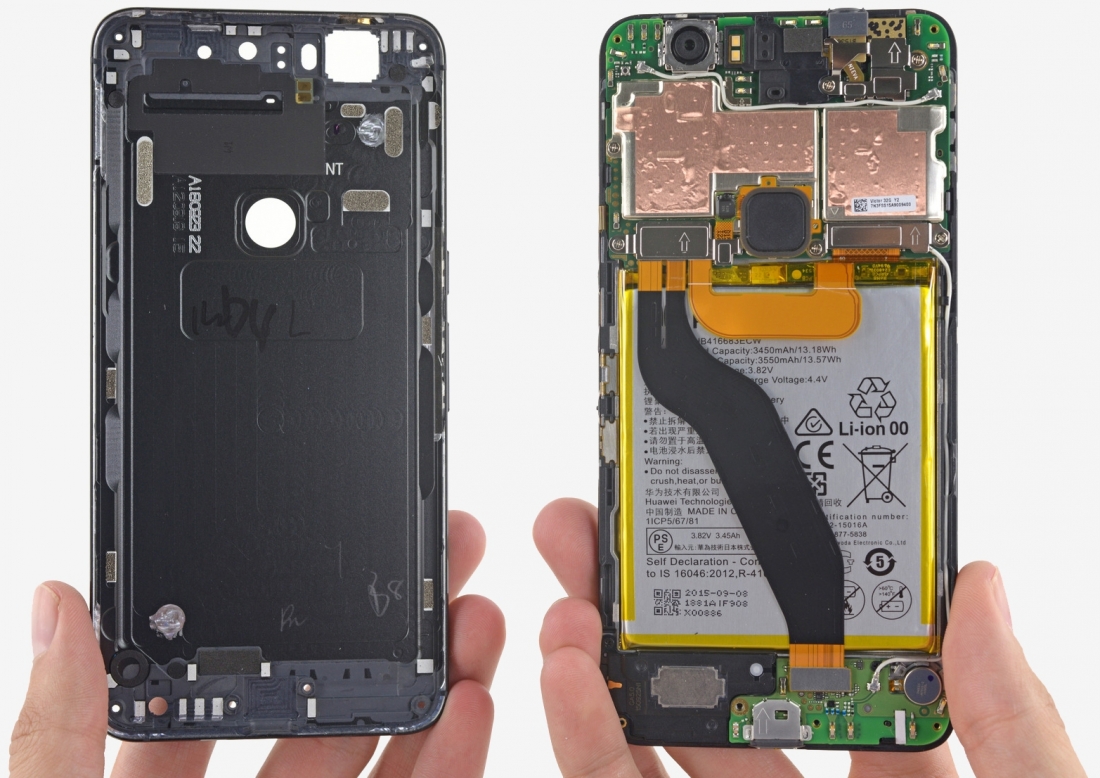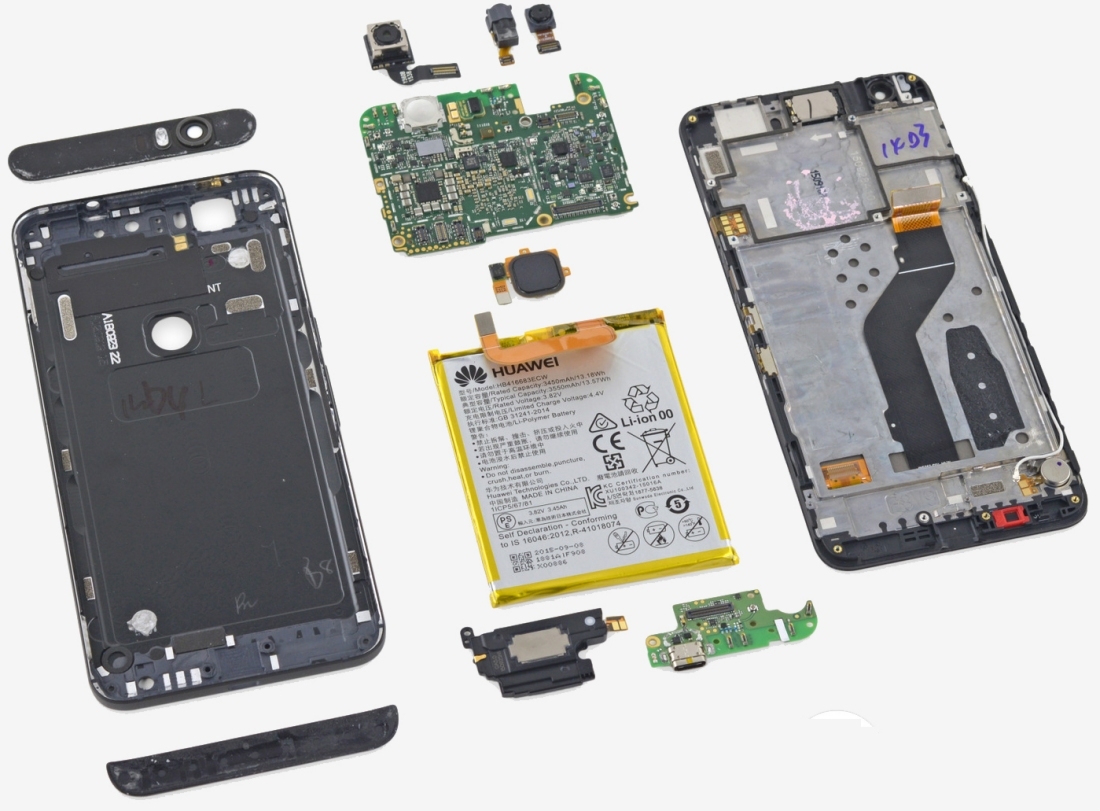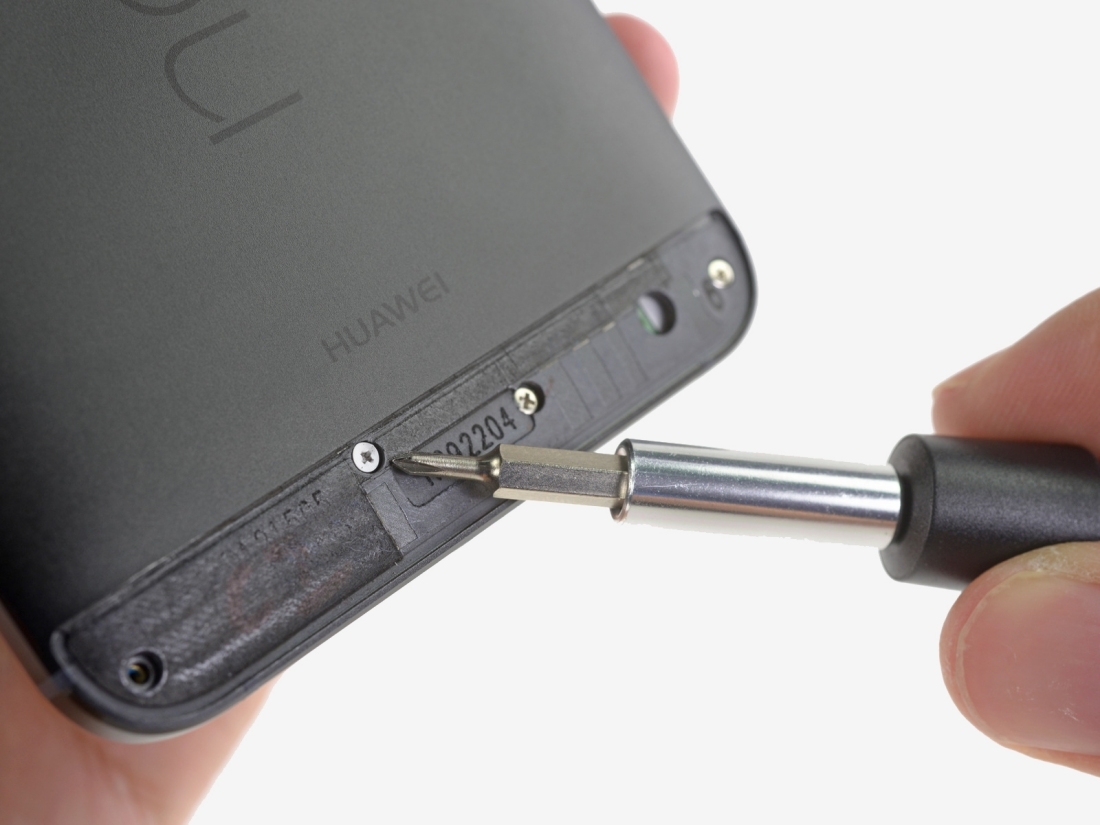The teardown specialists at iFixit dismantled Google's new Nexus 5X last week. Its use of modular components earned it a respectable repairability score of seven out of 10. Unfortunately, the same can't be said about the company's flagship handset, Huawei-built Nexus 6P.
The Nexus 6P's unibody design means there are no obvious screws to start with; instead, they're found under a plastic panel on the bottom of the rear panel that must be pried off with care. The glass panel at the top that encompasses the camera must also be removed to get at another screw before the front panel can be removed from its chassis.

Once free, the team found the phone's battery stuck in place with plenty of adhesive. The good news is that they didn't have to dig too deep to get to the power pack. The bad news is that it's not easy to get to this point, a fact that will no doubt be magnified for the inexperienced attempting to pull off a repair job at home.
There's more good news as the USB port is mounted to a small and inexpensive daughterboard instead of being soldered to the mainboard. Aside from the peculiar square Nexus Imprint sensor, there weren't really any other surprises to speak of.

All things considered, the Nexus 6P earned a repairability score of two out of 10 (the higher the score, the easier it is to repair). The handset received praise for having a solid external construction that improves durability and once the phone is open, replacing the battery shouldn't be too difficult.
Getting inside without damaging the glass camera cover, however, is a real challenge. What's more, the phone's display can't replaced without disassembling the entire device while Huawei's use of strong adhesive on select components only makes things more difficult.
All images courtesy iFixit
